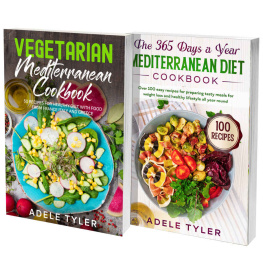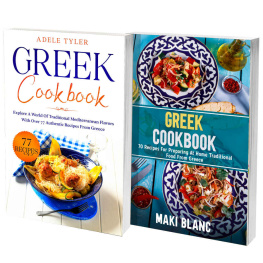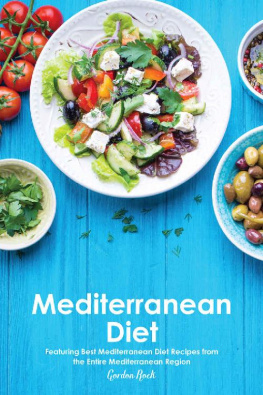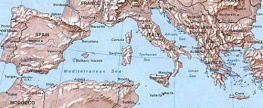TAPAS
COOKBOOK
70 Easy Recipes For Traditional Food From Spain |
Emma Yang
Copyright 2021 by (Emma Yang) - All rights reserved.
This document is geared towards providing exact and reliable information in regards to the topic and issue covered. The publication is sold with the idea that the publisher is not required to render accounting, officially permitted, or otherwise, qualified services. If advice is necessary, legal or professional, a practiced individual in the profession should be ordered.
- From a Declaration of Principles which was accepted and approved equally by a Committee of the American Bar Association and a Committee of Publishers and Associations.
It is not legal in any way to reproduce, duplicate, or transmit any part of this document in either electronic means or in printed format. Recording of this publication is strictly prohibited and any storage of this document is not allowed unless with written permission from the publisher. All rights reserved.
The information provided herein is stated to be truthful and consistent, in that any liability, in terms of inattention or otherwise, by any usage or abuse of any policies, processes, or directions contained within is the solitary and utter responsibility of the recipient reader. Under no circumstances will any legal responsibility or blame be held against the publisher for any reparation, damages, or monetary loss due to the information herein, either directly or indirectly.
Respective authors own all copyrights not held by the publisher.
The information herein is offered for informational purposes solely, and is universal as so. The presentation of the information is without contract or any type of guarantee assurance.
The trademarks that are used are without any consent, and the publication of the trademark is without permission or backing by the trademark owner. All trademarks and brands within this book are for clarifying purposes only and are the owned by the owners themselves, not affiliated with this document.
Contents
Introduction
Tapas are far more advanced nowadays. Tapas include everything from small olive sauces to intricate culinary skills. There are also tapas competitions to see who can make the best versions! Tapas has evolved to include briny mussels, cherry tomatoes, fried cod, and other delicacies. As the tapas tradition in Spain expands, tapas bars have grown to include small plates rather than just quick bites. Tapas have become more creative in recent years, and there are now various recipes to try. Tapas was always about using new, in-season Mediterranean products as well as traditional Spanish culinary delights . That is what you will be on the lookout for. Do not be put off by the presence of canned food in restaurants. Spain is described as having some of the finest packaged seafood on the earth. Sardines, clams, oysters, and other seafood are common in Spanish cuisine, do not be afraid to try them. Anything else would pale in comparison to the tapas culture of Spain.
To begin with, a "tapa" is merely a small serving of food. Tapas can be eaten in a variety of ways. The most popular origin story for tapas is that they began as tiny slices of meats or toast served in cafes as a way for drinkers to keep flies away from their beverages. The Spanish word tapas means "to cover." Gradually, the tiny bar snack became just as important as the beverages. They began to become more elaborate as well . Tapas describes the way food is served rather than individual dishes . Tapas have spread across Spain and have become an important part of their culture, as tapas have developed alongside Spanish food culture.
Tapas are divided into three categories: pinchos, cosas de picar, and cazuelas. Tiny foods such as artichokes and Jamon are known as Cosas de picar. Pinchos are tapas that come with a chopstick, such as a slice of Spain flatbread fixed to a loaf of toast with a toothpick. Cazuelas are specialty pizzas of food with salsa and a bit more material, such as grilled shrimp, sausages, or even a whole Spanish flatbread . Spain is a nation with a long and diverse coastline. It is the ruler of a Mediterranean Ocean and North Atlantic territory. As a result, a ton of fish appears on Spanish lists. The anchovy, a sweetness full of Omega-3 fats, Vitamin b, magnesium, and phosphorus, is most common. Many anchovies are wrapped in salt, which can be washed away with water.
"Tapas Cookbook" has a wide range of Tapas and Spanish recipes with different ingredients and methods. It has six chapters based on Breakfast, snack, lunch, dinner, salad, soups, and vegetarian recipes. All recipes with lots of health benefits are here. Try these recipes and make your meal more delightful and flavorful.
Chapter 1: Spanish Food at a Glance
Food material from the area's rugged terrain is emphasized in Spanish cuisine. Small plates of high-quality products, as well as salmon and veggies, are popular. While rich foods like Iberico ham and serrano ham are available, Spain also offers various lighter and healthy options. There is no such thing as a calorie-restricted plan in Spain. The Spanish place a premium on spending time with family and friends while still staying physically involved. It's an integral part of their everyday routine and a tradition as significant as football. Since food is considered sacred and intended to be appreciated, the Spanish do not limit themselves to calorie counting, fatty grams, or fructose intake to determine moderation.
1.1 History of Spanish Cuisine
Spain's place, especially in the Atlantic Ocean and the Mediterranean Sea, has influenced its cuisine. In traditional Spanish recipes, salmon is abundant and common. The several foreign locations that Spain once invaded have also had a strong influence on Traditional dishes. For example, Arabic crops such as grain, cocoa beans, auberge, peanuts, and lemon are frequently used in Spanish cuisine. Spain ruled several parts of South America during the arrival of the new era. They finally brought a range of foods from South America, including onions, tomatoes, peas, and cocoa. At the period, Spanish cuisine was still evolving, incorporating products from all over the world. The Spanish were using tomatoes in their cuisine for a long time . Spain has a long agricultural history that includes a diverse variety of nutrients. It is one of the world's leading suppliers of grape and artichokes, in general. These ingredients are used in the production of two of Spain's most popular products: liquor and olives. Spanish cuisine is still developing today, and it is one of the pioneers in developing a healthy balanced diet.
1.2 History of Traditional Spanish Dishes
Traditional Spanish food is simple, unpretentious food made with locally sourced ingredients or staple crops in the area. Mountains pass through Spain in many ways, creating natural access barriers and rendering transportation impossible until the second half of the twentieth century. This is only one of the factors why cooking varies so much from place to place. The other is that Spain was formed by the union of several independent kingdoms with its customs. Cocoas, in general, are one of those products that have influenced global eating habits. This snack became so famous around the world due to Spain's healthy appetite. Plus, they mixed it with other flavors such delicacies as caramel con churros and Atletico favorite. Most dishes are now cooked using the same techniques and products as they had been two or three centuries ago. Like the Romans, the Arabs who invaded and lived in Spain for over eight hundred years made significant contributions to Traditional dishes, as seen in many dishes. Other dishes arose as a result of American and European factors and were then adjusted to Spanish preferences. A few things have not changed: The food in Spain is clean, plentiful, and flavorful, and the Spaniards adore it.





![Yang - The latehomecomer: [a Hmong family memoir]](/uploads/posts/book/165016/thumbs/yang-the-latehomecomer-a-hmong-family-memoir.jpg)








